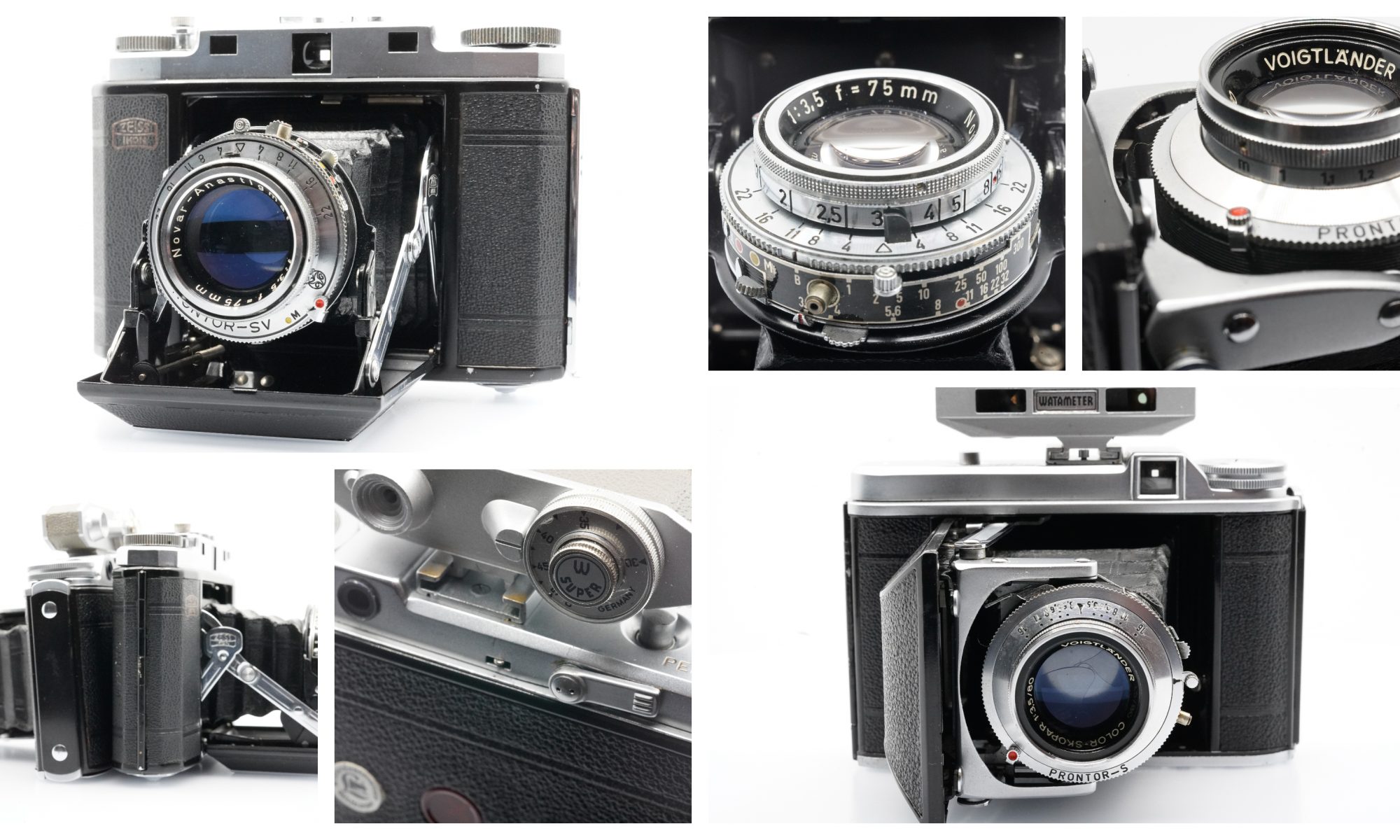The rediscovery and appreciation of medium format is steadily increasing. But not everyone wants to pay a fortune for a Hasselblad or Leica and is looking for cheaper alternatives such as a Bronica or Kiev. But there are much smaller options at Zeiss Ikon and Voigtlander. Imagine, top quality and compact in medium format.
They are not to be found in abundance on Ebay. There is a reason for this. Owners of medium format Zeiss Ikons or Voigtlanders will not be in line to offer their gem for sale. In the early fifties they dominated the market with affordable top quality cameras. It was the most popular time for 6×6 photography on 120 film. In the early fifties the companies dominated the market with affordable top quality cameras. It was the most popular time of 6×6 photography on 120 film. Actually everyone agrees, the sharpness and detail of medium format is unsurpassed. The 135 format, the well-known and widely used 35mm film, can’t compete with that. Not then, not now. Serious photographers have at least one medium format camera in use.


Our choice for an affordable and compact 120 camera is either the Zeiss Ikon Ikonta III (524/16) or the popular Voigtlander Perkeo II. Both cameras were launched on the market in the early fifties. In those days they were regarded as high end cameras that competed against the many models of Agfa, Adox, Kodak. A medium format camera was just as expensive (or cheap) as the then still innovative 35mm camera. Before WWII, there were hardly 135 cameras. A medium format camera was even cheaper as an innovative 35mm camera. Before the war, there were hardly any 135 film cameras. There were some made by Leica and Zeiss Ikon, but too expensive for the average hobby photographer. After the war that changed a lot and the modern roll with no less than 36 exposures became very popular. And so dozens of manufacturers made compact cameras that also became very cheap. It was the demise of the large, heavy 120 film cameras.


| voigtlander Perkeo II (520 grams) | Zeiss Ikon Ikonta III (640 grams) | |
| body type | folder | folder |
| filmtype | 120, 12 exposures | 120, 12 exposures |
| lenstype | Color-Skopar 80mm f/3.5 (four element front-cell focusing), coated | Novar 75mm f3.5 (three element front-cell focusing), coated |
| shutter type | Prontor S, Prontor-SV (this model), Prontor SVS, Compur-Rapid or Synchro-Compur | Prontor-SV (this model), also Prontor SVS and or Synchro-Compur |
| apertures | F3.5-F16 | F3.5-F32 |
| shutter times | B, 1-300s (this model)/500s with Compur Rapid | B, 1-300s (this model) |
| rangefinder | None, accessory from Voigtlander or Watameter | Uncoupled built in |
Both cameras work the same way. By means of a button the front cover can be opened and the bellows with the lens pops out. Both have an integrated lens with a built on shutter, the famous Prontor or Compur. These are examples of high-quality precision mechanics, everything is a fine interplay of tiny springs, screws, pins, levers, sockets. All settings are made on the lens, not the camera body. The body only functions as a film roll holder, transport of the film and frame counter with a simple viewfinder on top. The Ikonta has an uncoupled rangefinder. Focusing takes place by combining and overlapping two images via a mirror. The found distance value is then transferred to the lens. The Perkeo has an automatic film counter. You have to load a roll of film with the lever on the center of the back top plate to the right until you see number 1 in the red window. Then turn the lever to the left and the automatic counter will engage. You must wind the film to the next frame or you will not be able to release the shutter (!).


Both cameras have a self-timer and flash synchronisation with PC link. The cold flash shoe is only intended for accessories, such as the separate rangefinder on the Voigtlander. An indispensable accessory for taking sharp photos, because estimating distance in practice is far more difficult. Also handy is the exposure locking system to prevent double exposures. To follow the number of exposures, the cameras have a red viewing window on the back. The Perkeo also has a counting mechanism that displays the image number on the top. The Ikonta and the Perkeo are user-friendly cameras, but are also very basic and totally manual in every respect. But they are good and, above all, compact. Easy to take with you on hiking and biking tours instead of dealing with a large Twin Reflex or Bronica / Mamiya / Hasselblad machine. And if we also are to believe the many reviews of others, the quality is very similar.
And here some comparisons:








If you are searching for the manuals of both cameras, thank to Mike Butkus here they are:

